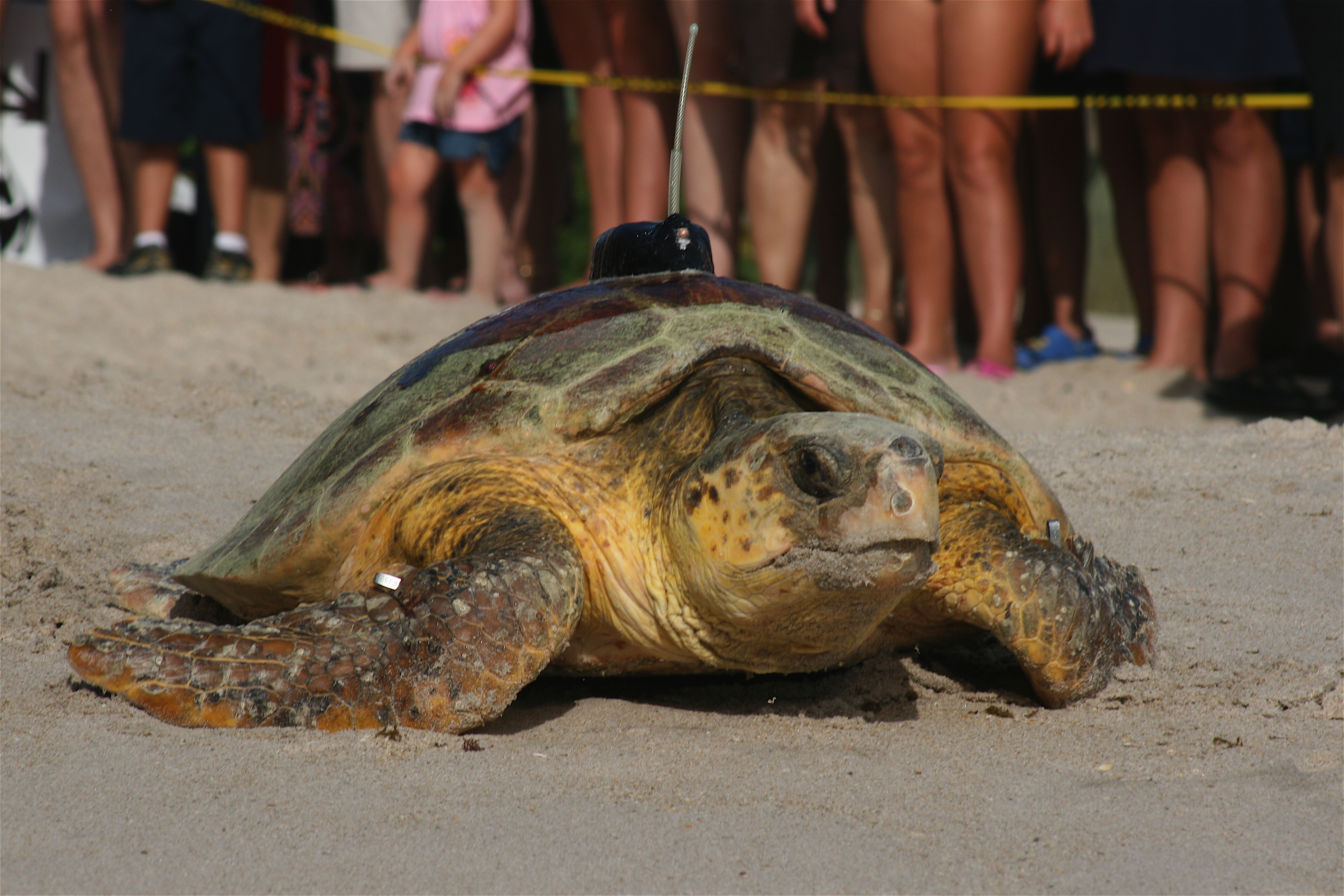Blood Tests Show Where Loggerhead Turtles Go


Every year, thousands of endangered loggerhead sea turtles crawl ashore at Florida's Archie Carr National Wildlife Refuge to lay eggs before dragging their leathery bodies back into the sea. But where they go after their trek isn't well-known.
Scientists can use GPS devices to record turtles' travels, but these geolocator tags are expensive, and may be lost if turtles die. A group of researchers has come up with a less expensive, easier way to find out where loggerheads voyage: testing their blood. A new study, published Sept. 20 in the journal PLoS ONE, found that this technique is just as accurate as using GPS tags.
The technique examines carbon isotopes in the turtles' blood, which come from the food the animals eat. Carbon has different isotopes, or variants, present in all living things, and the exact mix of isotopes varies by region; for example, the mixture in the mid-Atlantic is different from that of the Caribbean. By examining the mixture of carbon isotopes in the turtles' blood, scientists could determine the region to which the turtles migrated.
The study found that some turtles head for the water off the shores of Virginia and Delaware while others go to the Bahamas and the Gulf of Mexico. Some also stay nearby, off Florida's coasts. Previously, scientists thought that the majority of the loggerheads headed south, according to a release from the University of Central Florida.
"Think of these turtles as Florida tourists and snowbirds," Simona Ceriani, a University of Central Florida graduate student and study co-author, said in a statement. "They come and nest and then go back to lots of different places. And while we knew some went back north, we had no idea that this was a popular destination."
While there are efforts to protect the turtle nests on the beaches, protecting the foraging grounds of this endangered species is also important, the release noted. Many turtles die because they get tangled in fishing nets or encounter other dangers while out at sea.
"This research helps scientists and conservation managers identify key feeding areas for loggerhead turtles and helps direct policy and regulations that protect sea turtles in these specific areas," said Daniel R. Evans, a researcher at the Sea Turtle Conservancy and study co-author, in a statement.
Get the world’s most fascinating discoveries delivered straight to your inbox.
The Archie Carr National Wildlife Refuge is home to the second-largest population of loggerheads in the world and to about one of every four nests those turtles lay in the United States. While populations of other turtles have increased in the refuge, loggerhead numbers there have declined for unknown reasons.
Reach Douglas Main at dmain@techmedianetwork.com. Follow him on Twitter @Douglas_Main. Follow OurAmazingPlanet on Twitter @OAPlanet. We're also on Facebook and Google+.



